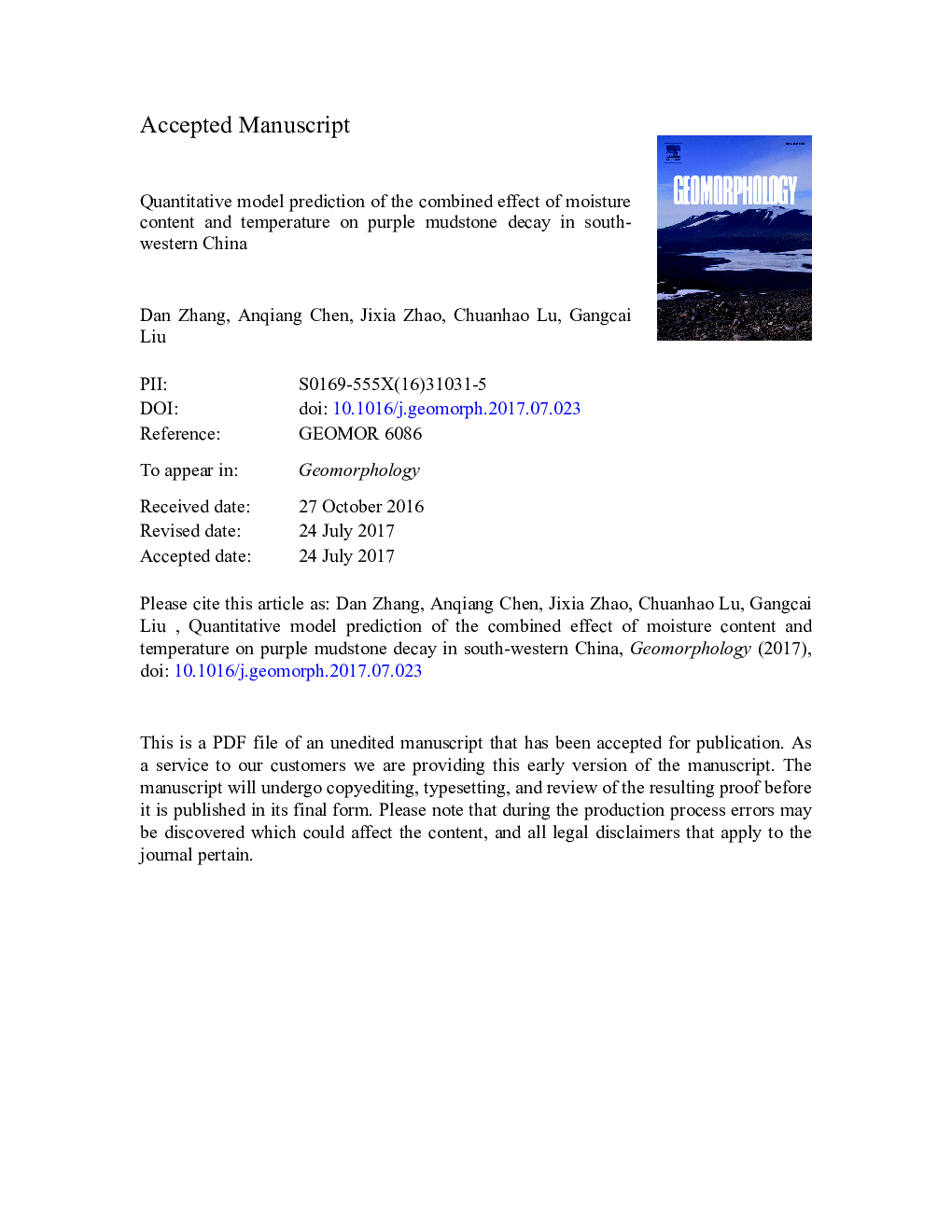| Article ID | Journal | Published Year | Pages | File Type |
|---|---|---|---|---|
| 5780783 | Geomorphology | 2017 | 27 Pages |
Abstract
Rock decay is mainly the result of the combined effects of moisture content and temperature, but little is known about the quantitative relationship between these variables and the rate of rock decay. In this study we develop quantitative calculation models of rock decay rate under laboratory conditions and validate the efficiency of these models by comparing the predicted rock decay mass and that measured for rock exposed in the field. Rainfall and temperature data in the field were standardised to a dimensionless moisture content and temperature variables, respectively, and then the predicted rock decay mass was calculated by the models. The measured rock decay mass was determined by manual sieving. Based on our previously determined relationship between a single factor (moisture content or temperature) and the rate of rock decay in the laboratory, power function models are developed. Results show that the rock decay mass calculated by the model was comparable with field data, with averaged relative errors of 1.53%, 9.00% and 11.82% for the Tuodian group (J3t), Matoushan group (K2m) and Lufeng group (J1l), respectively, which are mainly due to inaccurate transformation of field rainfall into the rock moisture content and artificial disturbance when the samples were sieved in the field. Our results show that the developed models based on laboratory-derived rates can accurately predict the decay rates of mudstones exposed in the field.
Related Topics
Physical Sciences and Engineering
Earth and Planetary Sciences
Earth-Surface Processes
Authors
Dan Zhang, Anqiang Chen, Jixia Zhao, Chuanhao Lu, Gangcai Liu,
